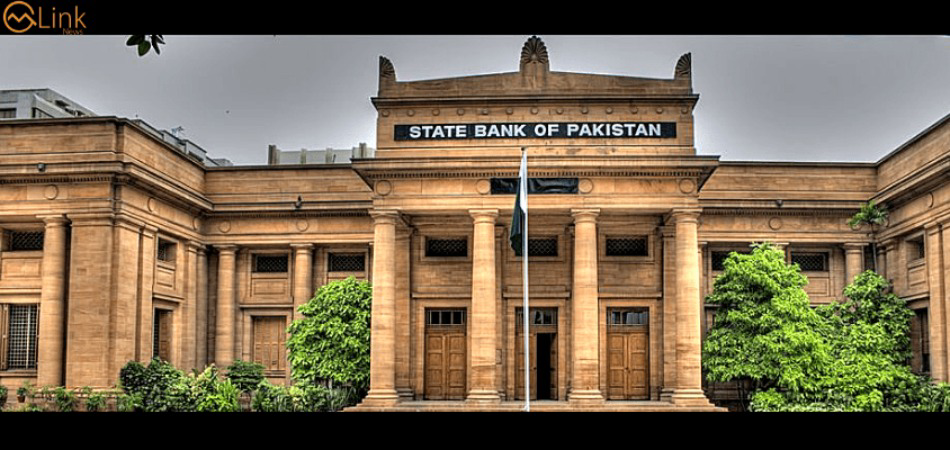Banking Sector: Valuations to eventually catch up amid earnings recovery

MG News | July 25, 2019 at 12:41 PM GMT+05:00
July 25, 2019 (MLN): In the milieu of slow economic growth, higher inflation, peaked interest rates and fiscal consolidation, when some of the sectors are in a very poor state, the banking sector of the economy is doing relatively well and is poised for the next profitability cycle.
Despite relatively better performance of the banking sector on the back continuous rise in interest rates (so far interest rates have risen by 725 bps since early 2018), the bank’s share prices haven’t moved so far, which is contrary to the well-trodden investment path that when rates go higher and start to stabilize, banks’ share prices outperform.
A research report by EFG Hermes, highlights the reasons that devaluation, the elephant in the room, has overshadowed the banks’ strong 1Q19 earnings performance and sentiment. Another investor macro concern is the magnitude of consolidation, but government debt re-profiling should be positive for banks.
The report further adds that the rise in interest rates by 725 bps since the beginning of 2018 has set up the platform for a strong recovery in interest spreads and profitability metrics.
As the central bank is taking an aggressive approach to tackle inflation and maintain positive real interest rates, the further rise in interest rates over the next 12 months could be a slid drag on the pace of the improvement in spreads of the bank because deposit pricing quickly adjusts to higher rates, while asset yields adjust with a lag.
It is also worth noting that the stronger improvement in spreads in 1Q19 was partially supported by a slowdown in the pace of policy rate hikes by the central bank – only 25bps increase in Feb 2019.
However, after channeling most of the liquidity in to shorter-dated treasury bills through most of 2018, maturity profile and yields are turning around the corner as banks are back in to re-building their bond portfolios. While the investment book of the banks continues to be dominated by shorter dated T-bills, the shift in to bonds is becoming noticeable. Thus, as the composition of the investment book shifts towards longer-dated government paper, a strong improvement in investment yields is expected.
“Currently there is a c100bps differential between the yield on 3-month T-bills and 3-year PIBs, and the shift in the maturity profile of the investment book should gain momentum over the next 12 months, as the government reduces its budgetary borrowings from the central bank as indicated in the recent budget,” says the report.
With regards to asset quality environment for the banks, which has been benign over the past five years on the back of improving economic growth and low interest rates, is near to its inflection point. A sharp increase in interest rates over the past 18 months coupled with a slowdown in the economy and currency devaluation is likely to weigh on the sector’s asset quality. As the report indicates that, “historically, a combination of weaker currency, higher rates, and a slowdown in the economy has led to higher NPLs for the sector.”
In addition, report also points out that, the NPL cycle over 2019-22 should be largely driven by the banks’ domestic exposure to three particular segments – textiles, SMEs, and consumer, in contrast to asset quality deterioration over 2015-18 which was largely driven by the banks’ international operations.
From valuation perspective, Pakistani banks have de-rated strongly over the past 18 months. The sharp decline in profitability over 2017-18 has been a key factor behind the de-rating.
Moreover, since MSCI inclusion in May 2017, Pakistan banks’ stock prices have had a poor run at the exchange, with aggregate market cap of all listed banks declining 25% over the past two years.
In addition, sustained outflows from foreign portfolio investors have also weighed on the stock price of the large banks – HBL and UBL. On a relative basis, however, the banks have done better than the KSE-100 index, which has declined by 35% from its peak in May 2017.
“While higher interest rates bode well for banks’ earnings, the stock price performance of the banks – apart from UBL and ABL – have all declined YTD. NBP understandably has delivered the worst performance on the overhang from the pension case, as well as rising NPLs connected to ongoing political corruption cases,” says the report.
But, at present, higher interest rates are driving strong net interest income and revenue growth, which was clearly visible in 1Q19 results. However, the adjustment of the prior years’ super taxes weighed down on earnings. With most of the rarities largely behind us, the banks’ earnings are expected to recover strongly from 2Q19 and onwards.
As the report highlighted, from a domestic institutional vantage point, banks present the best sector in terms of earnings growth outlook. Looking at the top 10 domestic equity funds in terms of size, sector allocation to banks has risen to c25.2% in Jun-19 from 19.6% in Dec-17.
Copyright Mettis Link News
Related News
| Name | Price/Vol | %Chg/NChg |
|---|---|---|
| KSE100 | 134,299.77 290.06M |
0.39% 517.42 |
| ALLSHR | 84,018.16 764.12M |
0.48% 402.35 |
| KSE30 | 40,814.29 132.59M |
0.33% 132.52 |
| KMI30 | 192,589.16 116.24M |
0.49% 948.28 |
| KMIALLSHR | 56,072.25 387.69M |
0.32% 180.74 |
| BKTi | 36,971.75 19.46M |
-0.05% -16.94 |
| OGTi | 28,240.28 6.19M |
0.21% 58.78 |
| Symbol | Bid/Ask | High/Low |
|---|
| Name | Last | High/Low | Chg/%Chg |
|---|---|---|---|
| BITCOIN FUTURES | 118,140.00 | 119,450.00 115,635.00 |
4270.00 3.75% |
| BRENT CRUDE | 70.63 | 70.71 68.55 |
1.99 2.90% |
| RICHARDS BAY COAL MONTHLY | 97.50 | 0.00 0.00 |
1.10 1.14% |
| ROTTERDAM COAL MONTHLY | 108.75 | 108.75 108.75 |
0.40 0.37% |
| USD RBD PALM OLEIN | 998.50 | 998.50 998.50 |
0.00 0.00% |
| CRUDE OIL - WTI | 68.75 | 68.77 66.50 |
2.18 3.27% |
| SUGAR #11 WORLD | 16.56 | 16.60 16.20 |
0.30 1.85% |
Chart of the Day
Latest News
Top 5 things to watch in this week
Pakistan Stock Movers
| Name | Last | Chg/%Chg |
|---|
| Name | Last | Chg/%Chg |
|---|




 MTB Auction
MTB Auction